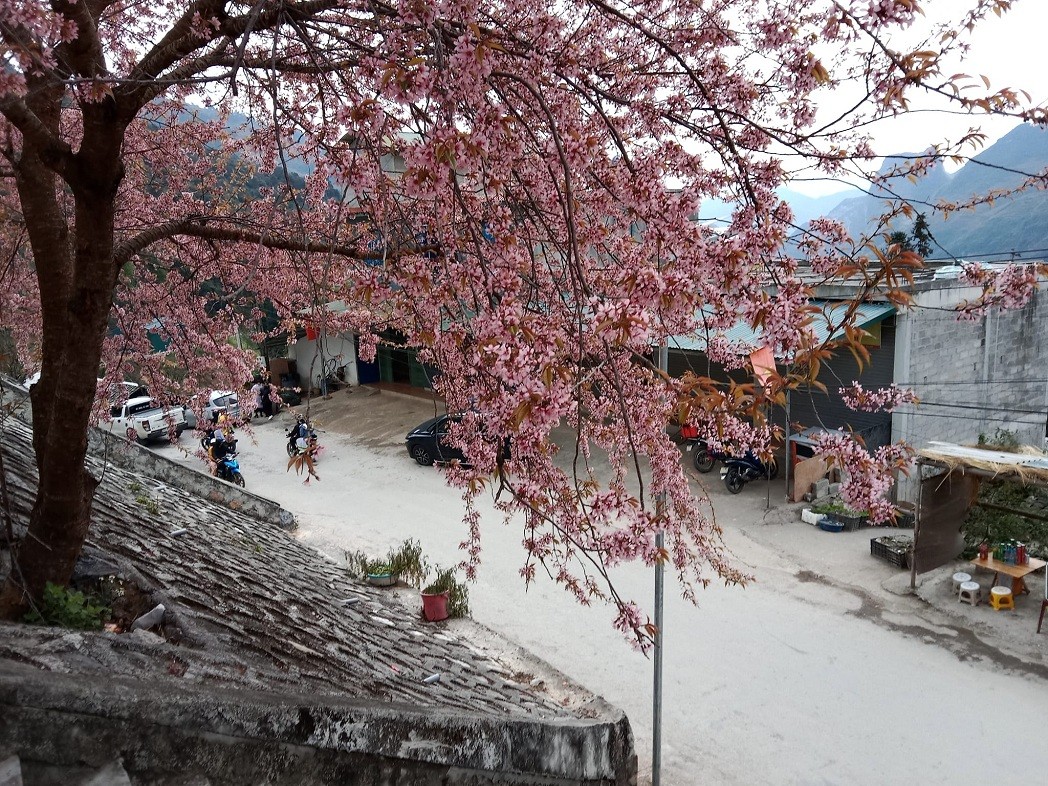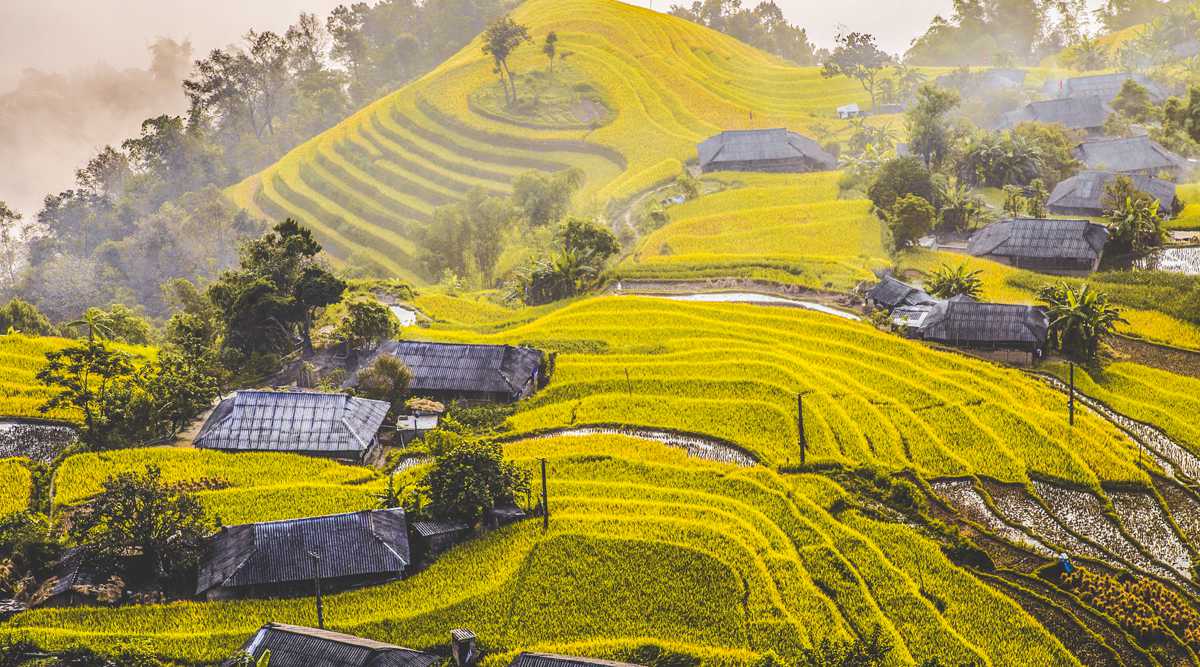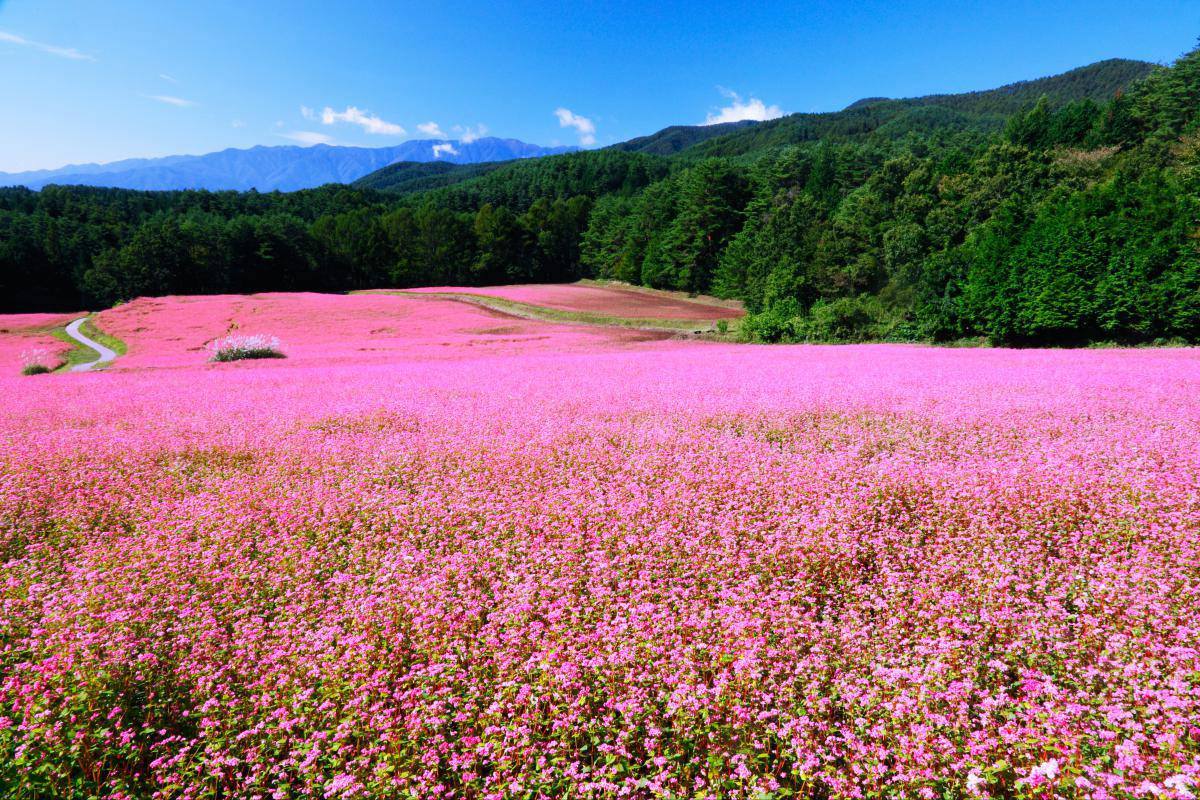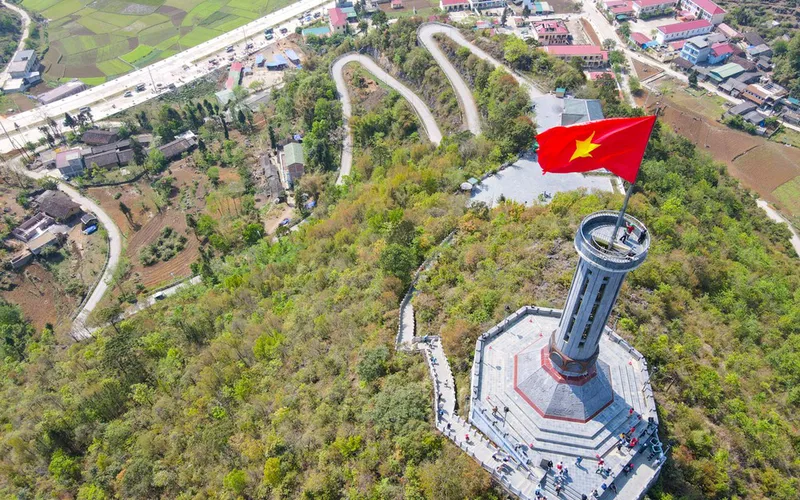未選択
-
Best time to see Ha Giang loop’s famous golden rice terraces
The Ha Giang Loop is one of Vietnam’s most breathtaking motorbike routes, with stunning mountain landscapes and vibrant ethnic cultures. One of the most awe-inspiring sights along the route is the golden rice terraces that paint the hillsides in autumn. To fully appreciate this natural wonder, it is important to understand the best time to visit and how Ha Giang Loop weather affects the rice fields’ transformation. Whether you're planning a Ha Giang Loop motorbike journey or looking for a cozy hostel in Ha Giang, timing your trip right will ensure an unforgettable experience.
Understanding the Rice Terraces in Ha Giang
Rice terraces are a vital part of the Ha Giang region, particularly in areas like Hoang Su Phi and Dong Van. These terraced fields are carved into the mountains by ethnic minority groups, mainly the Tay, Dao, and H’Mong people, who have practiced this agricultural method for centuries. The fields undergo dramatic changes throughout the year, but they are at their most spectacular when they turn golden before harvest. Understanding their significance adds to the appreciation of their beauty and the effort behind them.

Best Season to Witness the Golden Rice Terraces
Timing is crucial when planning a visit to see the golden rice terraces. The best period is from mid-September to early October, when the rice reaches full maturity, covering the mountains in a stunning golden hue. This season is ideal for photographers and travelers who want to capture the mesmerizing scenery. Additionally, the mild Ha Giang Loop weather during autumn makes motorbike exploration more enjoyable.
Ha Giang Loop Weather and Its Impact on Rice Terraces
Weather plays a significant role in shaping the rice terraces’ beauty throughout the year. Each season offers a unique landscape, influencing the travel experience:
-
Spring (March to May): During this time, farmers begin planting, and the terraces are filled with water, reflecting the sky like a giant mirror. While they are not golden yet, the scenery is still breathtaking.
-
Summer (June to August): The terraces turn vibrant green as the rice grows. However, frequent rains can make Ha Giang Loop motorbike routes more challenging due to slippery roads.
-
Autumn (September to October): This is the peak season when the fields turn golden. Ha Giang Loop weather is generally stable, making it the best time for sightseeing and photography.
-
Winter (November to February): After the harvest, the terraces are mostly bare. The colder temperatures and misty landscapes create a different but still fascinating atmosphere.

Top Locations for Viewing Golden Rice Terraces
Choosing the right spots can enhance your experience when exploring Ha Giang’s famous rice terraces. Here are some must-visit locations along the Ha Giang Loop:
-
Hoang Su Phi: This district is home to the most impressive rice terraces in Ha Giang. The best time to visit is late September when the fields reach their peak golden color.
-
Nam Ty Valley: A hidden gem within Hoang Su Phi, this valley offers breathtaking views of terraced fields nestled between lush green forests.
-
Tham Ma Pass: Famous for its winding road, this pass also provides incredible views of rice terraces cascading down the mountainsides during harvest season.
-
Dong Van & Meo Vac: While these areas are better known for their limestone karsts, they still feature stunning rice terraces that add to the region’s scenic beauty.
Tips for a Successful Trip
To make the most of your journey to see the golden rice terraces, proper planning is essential. Here are some helpful tips:
-
Book Accommodations Early: Autumn is a popular season, so securing a stay at a hostel in Ha Giang before starting the loop ensures a comfortable and hassle-free trip.
-
Check Ha Giang Loop Weather Updates: Even in autumn, occasional rain can occur. Checking the forecast will help you prepare for any unexpected weather changes.
-
Choose a Reliable Motorbike: The mountain roads can be tricky, so renting a well-maintained motorbike from a reputable Ha Giang Loop motorbike rental service is recommended.
-
Respect Local Farmers and Their Fields: The rice terraces are an essential part of local livelihoods, so avoid stepping on the crops and always be mindful when taking photos.

Conclusion
Visiting Ha Giang during the golden rice season is a once-in-a-lifetime experience. From mid-September to early October, the landscapes are at their most breathtaking, with golden fields stretching across the mountains. With favorable Ha Giang Loop weather and well-maintained motorbike routes, this is the perfect season for adventure seekers and nature lovers alike. By planning ahead and staying at a hostel in Ha Giang, you can fully immerse yourself in the beauty of northern Vietnam’s highlands while enjoying a comfortable and unforgettable journey.
PR -
-
How weather affects local life & festivals in Ha Giang
Ha Giang, with its breathtaking landscapes and rich cultural traditions, experiences significant changes throughout the year due to shifting weather patterns. The impact of Ha Giang Loop weather goes beyond just affecting road conditions - it also shapes the daily lives of the locals and the timing of important festivals. Understanding these seasonal variations will help travelers better appreciate the unique experiences Ha Giang has to offer, whether they are embarking on a Ha Giang Loop motorbike adventure or exploring the region’s vibrant cultural events.
Spring: A Time of Blossoms and Festivities
Spring (March to May) is one of the most vibrant times in Ha Giang. As the cold winter fades away, the mountains come alive with blooming peach, plum, and buckwheat flowers. The moderate temperatures and clear skies make it an ideal time for both farming and festivities. One of the most notable events during this period is the Long Tong Festival, celebrated by the Tay ethnic group to pray for a prosperous harvest. Travelers staying at a hostel in Ha Giang can take part in the lively festivities before beginning their journey on the Ha Giang Loop.

Summer: Agricultural Abundance and Rainy Challenges
Summer (June to August) is characterized by hot temperatures and frequent rain. While the landscape turns lush and green, heavy rainfall can make certain routes along the Ha Giang Loop motorbike journey more challenging. Despite the wet conditions, summer is an important time for agriculture, as farmers cultivate rice and corn in the terraced fields. The "Lễ hội Lồng Tồng" (Going to the Fields Festival) is often held at this time, where locals express gratitude for good weather and hope for a bountiful harvest.
Autumn: Golden Rice Fields and Ethnic Markets
Autumn (September to November) is considered the best season for both riding and cultural exploration. With mild temperatures and minimal rainfall, Ha Giang Loop weather is at its most favorable. This period also marks the rice harvest season, transforming the terraced fields into golden landscapes. It is also a time for traditional markets such as the Dong Van Market, where different ethnic groups gather to trade goods and celebrate their heritage. Many travelers choose to stay at a hostel in Ha Giang before heading to these local events, ensuring they get an early start to witness the cultural richness of the region.

Winter: Misty Landscapes and Traditional New Year Celebrations
Winter (December to February) brings chilly temperatures, often dropping below 10°C in high-altitude areas. The misty weather adds a mystical touch to the mountains, making spots like Ma Pi Leng Pass even more breathtaking. Despite the cold, this is an important season for the H'Mong New Year, one of the biggest celebrations in the region. Families reunite, traditional games are played, and special dishes like thắng cố (a traditional soup) are enjoyed. Visitors who stay at a hostel in Ha Giang during this time can immerse themselves in these festive traditions before setting off on their Ha Giang Loop motorbike adventure.
Conclusion
Ha Giang’s weather plays a crucial role in shaping the region’s daily life and cultural traditions. Whether you're planning a motorbike trip or hoping to experience local festivals, understanding the seasonal changes can enhance your journey. Regardless of the time of year, Ha Giang promises a unique and unforgettable experience for every traveler.
-
How Ha Giang’s weather affects your motorbike adventure
Ha Giang Loop weather plays a crucial role in shaping the overall motorbike experience. With unpredictable mountain climates, riders need to be well-prepared for varying conditions, from sunshine to heavy fog and sudden rain. Knowing how the weather impacts road safety, visibility, and comfort is essential for a smooth journey. This guide explores the seasonal effects on the Ha Giang Loop motorbike adventure and provides useful tips to adapt to different conditions.
Temperature Fluctuations and How to Prepare
Ha Giang’s mountainous terrain causes significant temperature variations between day and night. During the colder months, temperatures can drop to 5°C in high-altitude areas, while summer can bring highs of 35°C. Riders must pack accordingly to stay comfortable throughout the day. Layering is key, as mornings and evenings can be chilly, but afternoons may get warm. Staying at Hostel in Ha Giang before starting the journey allows travelers to check the latest weather updates and pack appropriately.

Rainy Conditions and Road Safety
Rain is one of the biggest challenges on the Ha Giang Loop. Sudden downpours, especially during the summer months, can make roads slippery and increase the risk of landslides in certain areas. A well-maintained motorbike with quality tires and brakes is essential for navigating wet roads safely. Waterproof gear, including a rain jacket and pants, helps riders stay dry and comfortable. Checking Ha Giang Loop weather forecasts before setting out and riding cautiously during rainstorms can prevent accidents.
Fog and Reduced Visibility Challenges
Fog is common in the early mornings and winter season, reducing visibility on winding mountain roads. This can make navigating the Ha Giang Loop motorbike route more difficult, especially on steep descents and sharp turns. To stay safe, riders should use headlights, wear reflective gear, and avoid speeding. Taking breaks when visibility is too low can help prevent dangerous situations. Staying at Hostel in Ha Giang allows travelers to start their ride at optimal times, avoiding the densest fog periods.

Dry Season and Ideal Riding Conditions
The dry months from October to April provide the best conditions for motorbike adventures. With clear skies, minimal rainfall, and stable road conditions, riders can fully enjoy the breathtaking landscapes. However, even during this period, dust can become an issue, particularly on less-traveled paths. Wearing a face mask or scarf helps protect against dust inhalation. Proper hydration is also crucial, as the dry air and long riding hours can lead to dehydration.
Wind Conditions and Stability on the Road
Strong winds, particularly in open highland areas, can affect motorbike stability. This is especially common in winter when cold gusts sweep through the mountains. Keeping a firm grip on the handlebars and distributing weight evenly helps maintain control. Riders should also be cautious when overtaking vehicles or navigating narrow passes where wind pressure can be stronger.

Best Season for a Ha Giang Loop Motorbike Adventure
Each season offers a unique experience, but autumn (September to November) and spring (March to May) are the most favorable. These months provide moderate temperatures, beautiful landscapes, and relatively stable Ha Giang Loop weather. Travelers who prefer avoiding extreme conditions should plan their trip around these periods. Checking with Hostel in Ha Giang before the journey helps ensure the latest weather updates and road conditions are considered.
Final Tips for Weather-Prepared Riding
Being flexible with the itinerary allows riders to adjust plans based on weather conditions. Always check forecasts before heading out, wear protective gear, and ensure the motorbike is in excellent condition. With the right preparation, Ha Giang’s unpredictable weather can become part of the adventure, adding to the thrill of exploring Vietnam’s most scenic motorbike route.
-
The ultimate guide to Ha Giang loop weather by season
Understanding Ha Giang Loop weather is essential for planning an unforgettable motorbike adventure. The region experiences distinct seasonal changes, each offering unique landscapes, challenges, and experiences. Whether chasing golden rice fields, misty mountain roads, or lush green valleys, knowing what to expect each season ensures a safe and enjoyable journey. For those looking to embark on a Ha Giang Loop motorbike trip, this guide breaks down the weather conditions by season and provides useful tips for preparation.
Spring (March to May) – Blooming Flowers and Mild Temperatures
Spring in Ha Giang brings comfortable temperatures ranging from 15°C to 25°C, making it an ideal time to explore the loop. The weather is mostly dry, and the mountains burst into color as peach and plum blossoms bloom across the hillsides. The clear skies and moderate temperatures create perfect riding conditions for those seeking a smooth Ha Giang Loop motorbike experience.
However, occasional spring drizzles can make the roads slightly slippery. Packing a lightweight rain jacket and ensuring tires have good grip can help maintain safety on the winding roads. Staying at a well-located accommodation like Hostel in Ha Giang provides a convenient base before starting the journey.

Summer (June to August) – Green Landscapes and Sudden Showers
The summer months bring hot temperatures ranging from 25°C to 35°C, with increased humidity and frequent afternoon showers. While this season turns the rice terraces into a stunning green paradise, heavy rains can lead to slippery roads and occasional landslides. Riding the Ha Giang Loop motorbike route during this season requires extra caution, particularly on steep and winding paths.
Carrying a waterproof bag for belongings and wearing high-quality rain gear ensures comfort during sudden downpours. Early morning rides are advisable as rainfall is more common in the afternoons. Travelers looking for local guidance on road conditions can check with Hostel in Ha Giang before setting out.
Autumn (September to November) – Golden Rice Fields and Cool Breezes
Autumn is considered the best season to explore Ha Giang, with temperatures ranging from 20°C to 28°C. This period is famous for the breathtaking golden rice terraces in Hoang Su Phi and along the loop. With minimal rainfall and clear skies, the riding conditions are optimal, attracting adventurers from all over the world.
This is also the peak season, meaning more tourists on the roads and in villages. Booking accommodations in advance, such as Hostel in Ha Giang, ensures a smooth experience. Morning and late afternoon rides offer the best lighting for photography, while midday sun can still be strong, so sun protection is recommended.

Winter (December to February) – Chilly Mornings and Misty Roads
Winter in Ha Giang brings a completely different atmosphere, with temperatures dropping to 5°C in the higher elevations. Misty mornings and occasional frost in areas like Dong Van and Meo Vac create a surreal landscape, but riders should be prepared for cold conditions, especially on early morning departures.
Layered clothing, insulated gloves, and windproof jackets are essential for a comfortable ride. The roads can become foggy, reducing visibility, so extra caution is required when navigating the Ha Giang Loop motorbike route. Hostel in Ha Giang provides a warm place to stay and gather insights on the safest routes before heading out.
Tips for Choosing the Best Season to Ride
Selecting the best time to ride depends on personal preferences and riding experience. For beginners, autumn and spring offer the most stable conditions, while summer and winter require more advanced skills due to unpredictable weather. Checking local forecasts before departure and having a flexible itinerary can help adjust for unexpected weather changes.
No matter the season, the Ha Giang Loop remains one of the most rewarding motorbike adventures in Vietnam. By understanding the seasonal weather patterns and preparing accordingly, travelers can ensure a safe and memorable journey through Vietnam’s stunning northern landscapes.
-
How to avoid tourist crowds at Lung Cu flag point
Lung Cu Flag Point is one of the most iconic destinations in Ha Giang, offering stunning panoramic views and a deep sense of national pride. However, due to its popularity, the site can become crowded, especially during peak travel seasons. For those seeking a quieter and more personal experience, strategic planning is essential. Knowing the best times to visit, alternative routes, and local accommodations like Ha Giang City Hostel can help travelers enjoy the landmark without the crowds.
Visiting During Off-Peak Hours
Timing plays a significant role in avoiding large groups at Lung Cu Flag Point. The busiest times tend to be late mornings and early afternoons when tour groups arrive. To experience a more peaceful visit, consider arriving early in the morning before 8 AM or later in the afternoon around 4 PM. These hours provide the best lighting for photography while allowing visitors to enjoy the site in a more serene atmosphere.

Choosing the Right Season for Travel
Seasonal fluctuations impact the number of visitors at Lung Cu. The peak seasons are from September to November, when the rice terraces in Ha Giang are golden and attract tourists, and from March to May, when spring brings mild weather. Traveling in the winter months (December to February) or during the rainy season (June to August) significantly reduces the number of tourists. While the weather may be colder or wetter, the reward is a more tranquil experience at the flag tower.
Taking Lesser-Known Routes
Most visitors take the main road from Dong Van to Lung Cu, which is the most direct but also the busiest. Adventurous travelers can explore alternative routes that not only offer fewer crowds but also provide breathtaking scenery along the way. By using the Ha Giang City Hostel as a base, visitors can inquire about quieter routes or hidden viewpoints that offer a unique perspective of the area. Exploring small village paths can lead to unexpected cultural encounters and stunning landscapes away from the usual tourist flow.

Visiting on Weekdays Instead of Weekends
Weekends see the highest number of tourists, especially local travelers from other parts of Vietnam. Planning a visit on a weekday, particularly Tuesday through Thursday, significantly reduces the number of people at the flag point. Additionally, visitors can combine their trip with a visit to Dong Van Market, which is less crowded on weekdays, allowing for a more immersive experience in the local culture.
Exploring Nearby Attractions First
Many tourists head straight to Lung Cu Flag Point early in the day, creating a surge in crowds around mid-morning. To avoid this, consider exploring nearby attractions first and visiting the flag tower in the late afternoon. Locations such as ethnic minority villages or Ma Le Commune offer authentic cultural experiences and can be visited in the morning before reaching Lung Cu when the crowds have dispersed.

Staying Overnight Near Lung Cu
Rather than making a rushed day trip from Ha Giang City or Dong Van, staying overnight near Lung Cu allows visitors to enjoy the area during quieter hours. Nearby accommodations offer a chance to wake up early and visit the flag point before tour buses arrive. Ha Giang City Hostel provides useful travel advice and connections to guesthouses near Lung Cu for a more relaxed experience.
Avoiding National Holidays and Festivals
Vietnamese public holidays such as Tet (Lunar New Year), Reunification Day (April 30), and Independence Day (September 2) see a surge in domestic tourism. Lung Cu Flag Point becomes a prime destination for local travelers during these times, making it one of the busiest periods to visit. Checking the national holiday calendar and avoiding these dates ensures a less crowded visit.

Enjoying a More Personalized Experience
Avoiding tourist crowds allows travelers to fully appreciate the historical and cultural significance of Lung Cu. With fewer people around, visitors can take their time climbing the steps, absorbing the breathtaking views, and reflecting on the significance of Vietnam’s northernmost point. Additionally, smaller crowds mean better opportunities for capturing stunning, unobstructed photographs.
Making the Most of a Peaceful Visit
By planning strategically and following these tips, visitors can enjoy a more intimate and rewarding experience at Lung Cu Flag Point. From choosing the right time to visit to staying in accommodations like Ha Giang City Hostel, small adjustments can make a big difference in avoiding crowds. Whether exploring alternative routes or visiting on a weekday, these strategies help ensure a peaceful and memorable trip to one of Vietnam’s most symbolic landmarks.
